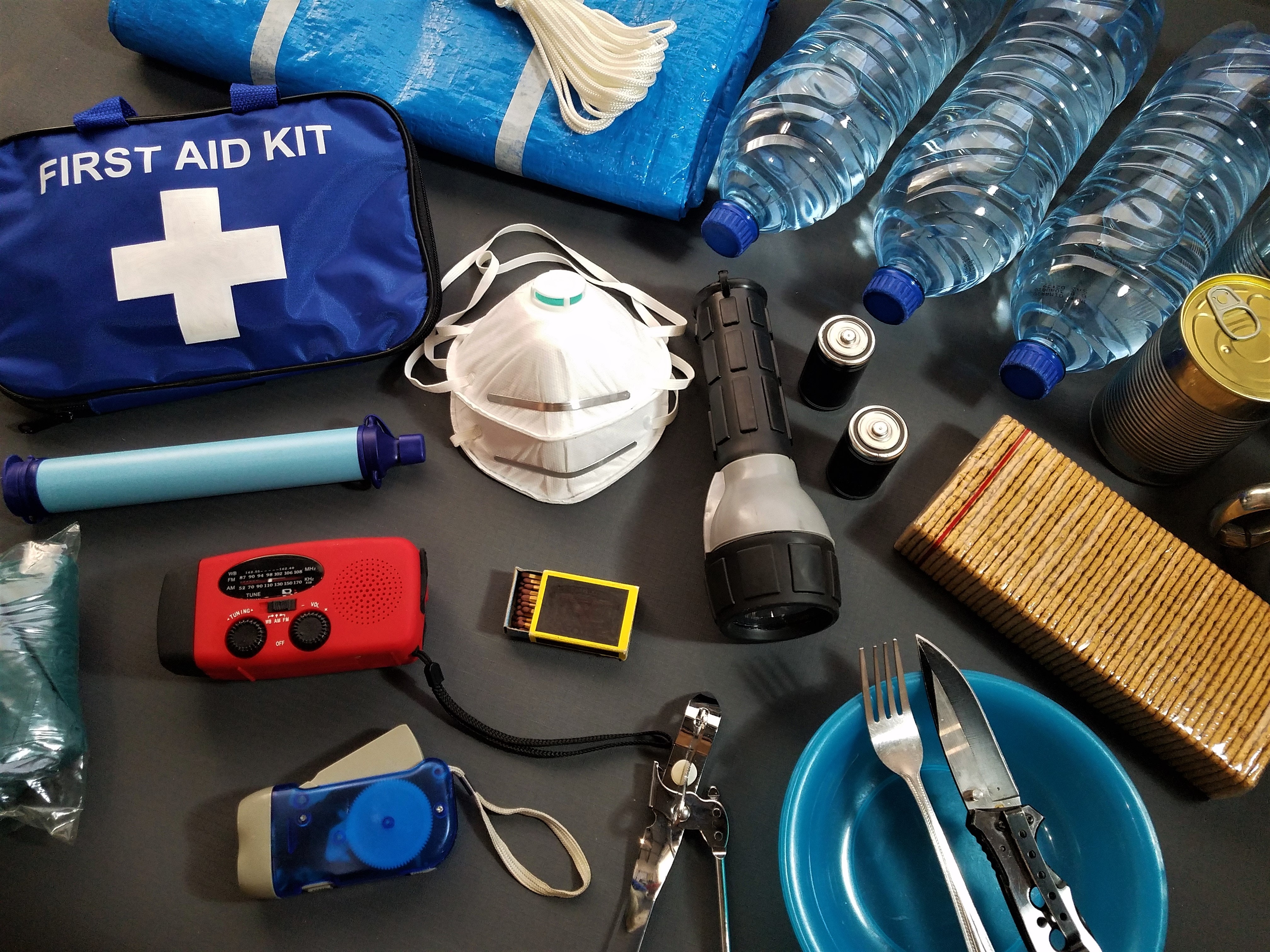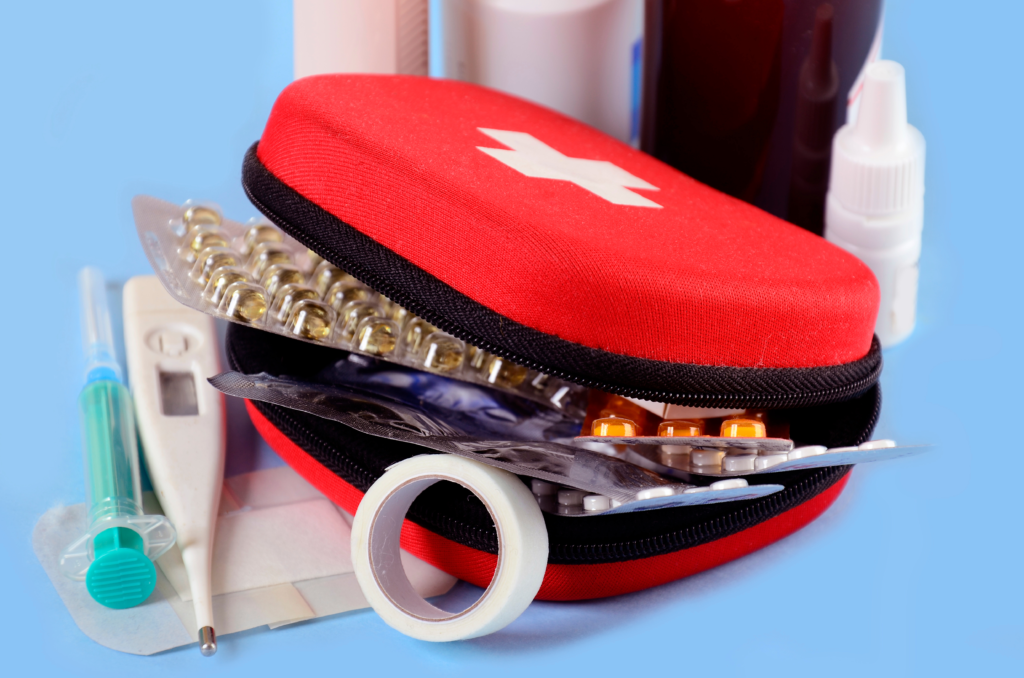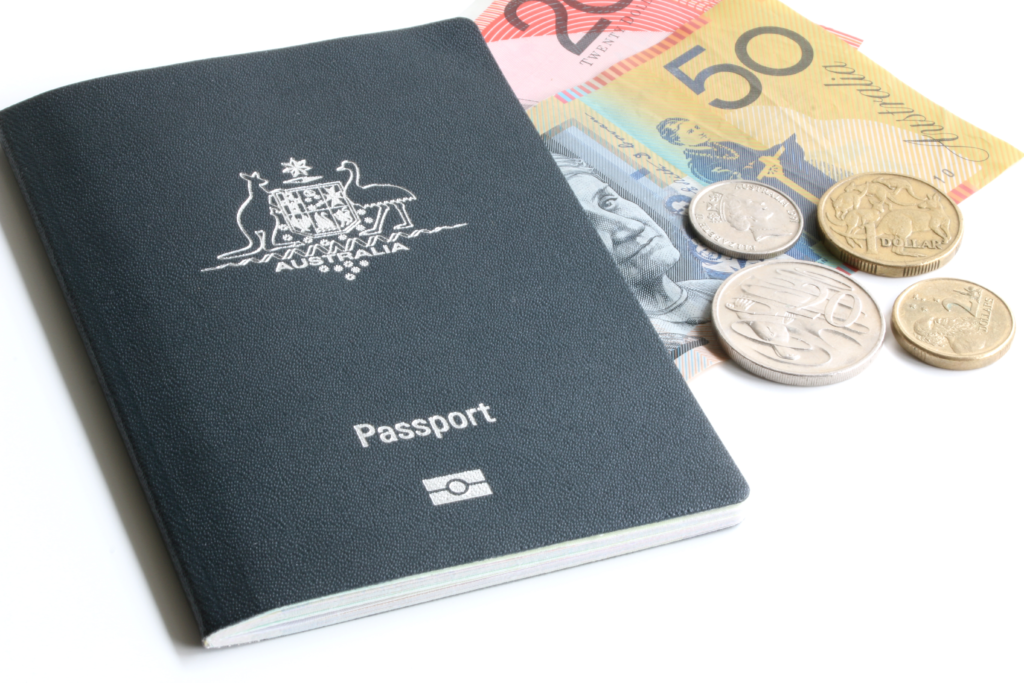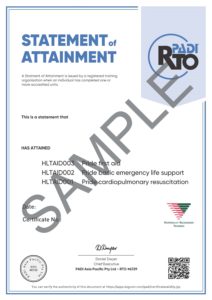
Are you and your family ready for an emergency? Do you have what you need to survive a disaster situation in your area? A well-prepared, basic emergency kit is simple to assemble, should last for three days of isolation, will help you prepare for anything and could mean the difference between life and death in a disaster event.
Water
Humans can only survive for three days without water (depending on individual needs) so having an adequate supply of water is imperative. A basic emergency survival kit should contain at least three days’ worth of water for each person the kit is servicing. Consider investing in a jerry can to fill at home, or purchasing large containers of bottled water. A secondary alternative to bottled water is purchasing a LifeStraw, or water purifying tablets, in order to drink from any source – not just the tap.
Food
When packing food for an emergency survival kit, its best to follow the K.I.S.S. principle (keep it simple silly – for those that don’t know). Pack easy-to-eat foods with high levels of nutrition like nuts, dried fruit and protein bars. Foods that take little water to prepare are also ideal. This may include dehydrated camping meals or canned food – just remember to pack a can opener for the latter! Be sure to include food for the whole family, including babies and pets as well as basic utensils needed to consume food.
Communication
In this day and age, the general population depend on mobile phones and the internet for important updates and communication. However, in a disaster situation these communication forms often become far less reliable. Being able to receive emergency updates may mean the difference between life and death so it is important to have adequate devices to do so. These should include a battery powered radio with extra batteries and prepaid phone cards and coins for a payphone if necessary. Additionally, a fully charged battery bank and relevant charging cables should be packed to ensure mobile phones can be kept on.
Light
Light is an incredibly important tool in any basic emergency survival kit. For safety reasons, it is important to include one torch/flashlight with extra batteries per person. A lantern that can illuminate a larger area along with candles and waterproof matches should also be included.

First Aid and Cleanliness
A comprehensive first aid kit with a snake bite kit is a must in any emergency survival kit in Australia. This will help to mitigate any injuries that occur during an emergency situation. Knowledge of using contents of these kits is essential, so a yearly first aid course is an essential part of survival preparations. PADI RTO Trainers conduct first aid courses Australia wide to help brush up on necessary skills.
Remember to also include at least three days medications, prescriptions and dosage information for each person. Toiletries and cleanliness items can be a huge comfort during an emergency situation, so have these included in the emergency kit kit – just don’t forget the toilet paper!
Clothing and Warmth
A warm jacket, waterproof jacket, hat and gloves should be included in the kit for each person the kit is servicing. In addition, consider packing a warm blanket for each emergency kit member. Do not underestimate the importance of keeping warm in an emergency situation, not only will appropriate clothing regulate body temperature, but having blankets or pillows can help to keep family members comfortable and happy.
Important Documents and Money
Take photos or scan important documents and store them on a dedicated USB in the emergency kit. Documents can include local area maps for navigation, insurance papers, wills and life insurance policies, house deeds, birth and marriage certificates, passports or visa details, stocks and bonds, bank account details and anything else deemed important. Remember to also include some cash in your emergency kit, when power is lost it often means ATM’s and eftpos machines are unavailable.

Emergency survival kit preparation should include a stocktake of all items at least yearly, but ideally every six months. This will ensure that nothing has reached its expiry date or has worn down to a point where it will no longer be useful.
Get ready for an emergency in your area by completing a first aid course with a PADI RTO trainer near you.

